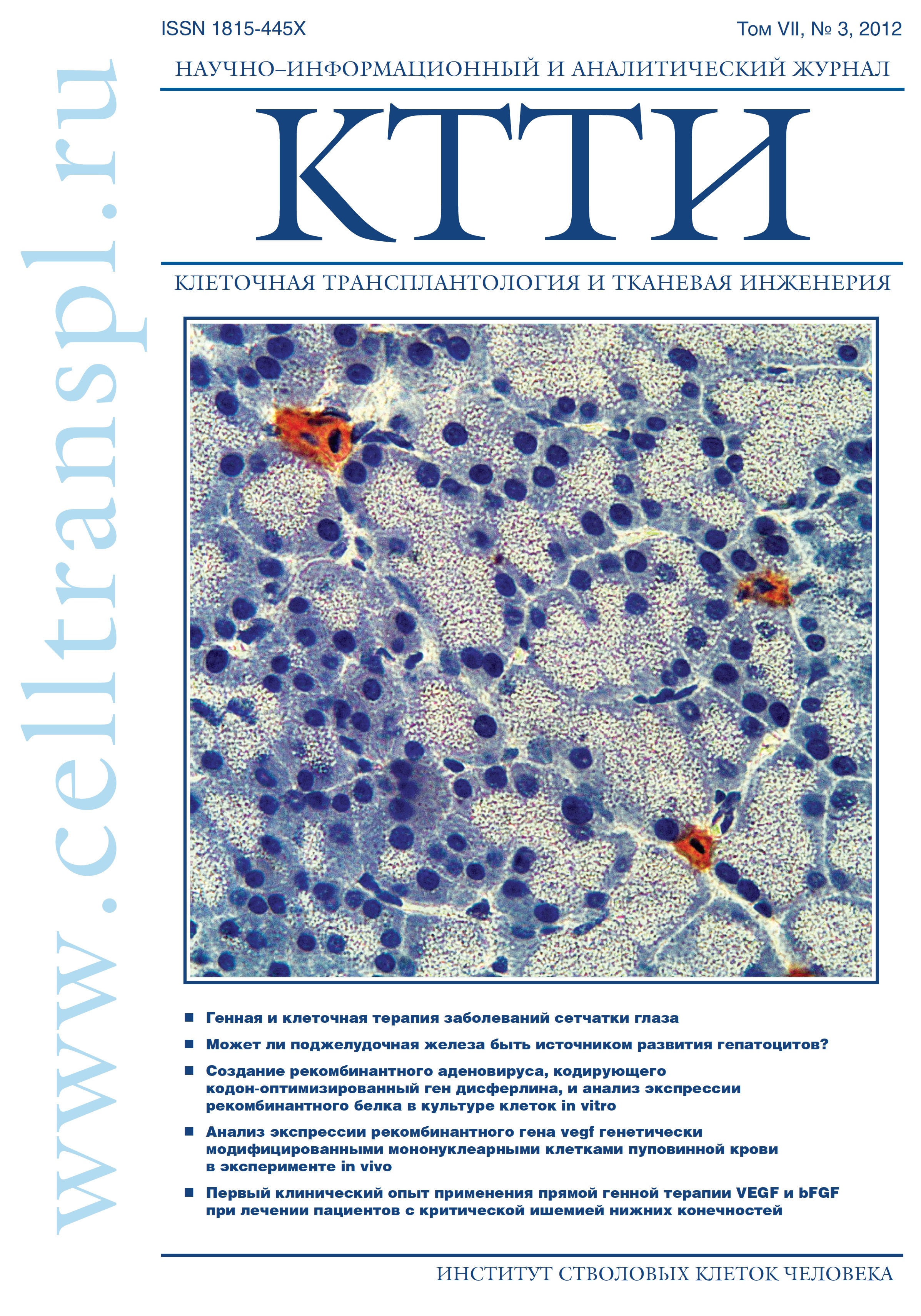Generation of recombinant adenoviruses and lentiviruses expressing angiogenic and neuroprotectivefactors using Gateway cloning technology
- 作者: Cherenkova EE1, Fedotova VY1, Borisov MA2, Islamov RR2, Rizvanov AA1
-
隶属关系:
- Kazan (Volga region) Federal University, Kazan
- Kazan State Medical University, Kazan
- 期: 卷 7, 编号 3 (2012)
- 页面: 164-168
- 栏目: Articles
- ##submission.dateSubmitted##: 11.01.2023
- ##submission.datePublished##: 15.09.2012
- URL: https://genescells.ru/2313-1829/article/view/121687
- DOI: https://doi.org/10.23868/gc121687
- ID: 121687
如何引用文章
详细
find an optimal vector - a carrier of genetic information.
Viruses represent a natural biological system for gene
transfer into eukaryotic cells. One of the most effective
and proven vectors for delivery of recombinant nucleic acids
into mammalian cells are adenoviruses and lentiviruses. In
this study using the Gateway cloning we have constructed
adenoviral and lentiviral vectors encoding angiogenic and
neuroprotective factors: various isoforms of vascular
endothelial growth factor vegf121, vegf165, vegf189; basic
fibroblast growth factor fgf2; glial cell-derived neurotrophic
factor gdnf. The efficiency of transduction of HEK293A cell
line with generated recombinant viruses and expression of
recombinant proteins were confirmed by immunofluorescent
analysis.
作者简介
E Cherenkova
Kazan (Volga region) Federal University, KazanKazan (Volga region) Federal University, Kazan
V Fedotova
Kazan (Volga region) Federal University, KazanKazan (Volga region) Federal University, Kazan
M Borisov
Kazan State Medical University, KazanKazan State Medical University, Kazan
R Islamov
Kazan State Medical University, KazanKazan State Medical University, Kazan
A Rizvanov
Kazan (Volga region) Federal University, KazanKazan (Volga region) Federal University, Kazan
参考
- Leker R.R., Shohami E. Cerebral ischemia and trauma-different etiologies yet similar mechanisms: neuroprotective opportunities. Brain Res. Brain Res. Rev. 2002; 39(1): 55-73.
- Abe K. Therapeutic potential of neurotrophic factors and neural stem cells against ischemic brain injury. J. Cereb. Blood Flow Metab. 2000; 20(10): 1393-408.
- Leker R.R., Soldner F., Velasco I. et al. Long-lasting regeneration after ischemia in the cerebral cortex. Stroke 2007; 38(1): 153-61.
- Beck K.D., Valverde J., Alexi T. et al. Mesencephalic dopaminergic neurons protected by GDNF from axotomy-induced degeneration in the adult brain. Nature 1995; 373(6512): 339-41.
- Tomac A., Lindqvist E., Lin L.F. et al. Protection and repair of the nigrostriatal dopaminergic system by GDNF in vivo. Nature 1995; 373(6512): 335-9.
- Dore-Duffy P., Wang X., Mehedi A. et al. Differential expression of capillary VEGF isoforms following traumatic brain injury. Neurol. Res. 2007; 29(4): 395-403.
- Lafuente J.V., Argandona E.G., Mitre B. VEGFR-2 expression in brain injury: its distribution related to brain-blood barrier markers. J. Neural. Transm. 2006; 113(4): 487-96.
- Papavassiliou E., Gogate N., Proescholdt M. et al. Vascular endothelial growth factor (vascular permeability factor) expression in injured rat brain. J. Neurosci. Res. 1997; 49(4): 451-60. 9. Sköld M.K., Gertten C. VEGF and VEGF receptor expression after experimental brain contusion in rat. Neurotrauma 2005; 22(3): 353-67.
- Vorburger S.A., Hunt K.K. Adenoviral gene therapy. Oncologist 2002; 7(1): 46-59.
- Yang X., Boehm J.S., Yang X. et al. A public genome-scale lentiviral expression library of human ORFs. Nat. Methods. 2011; 8(8): 659-61.
补充文件








